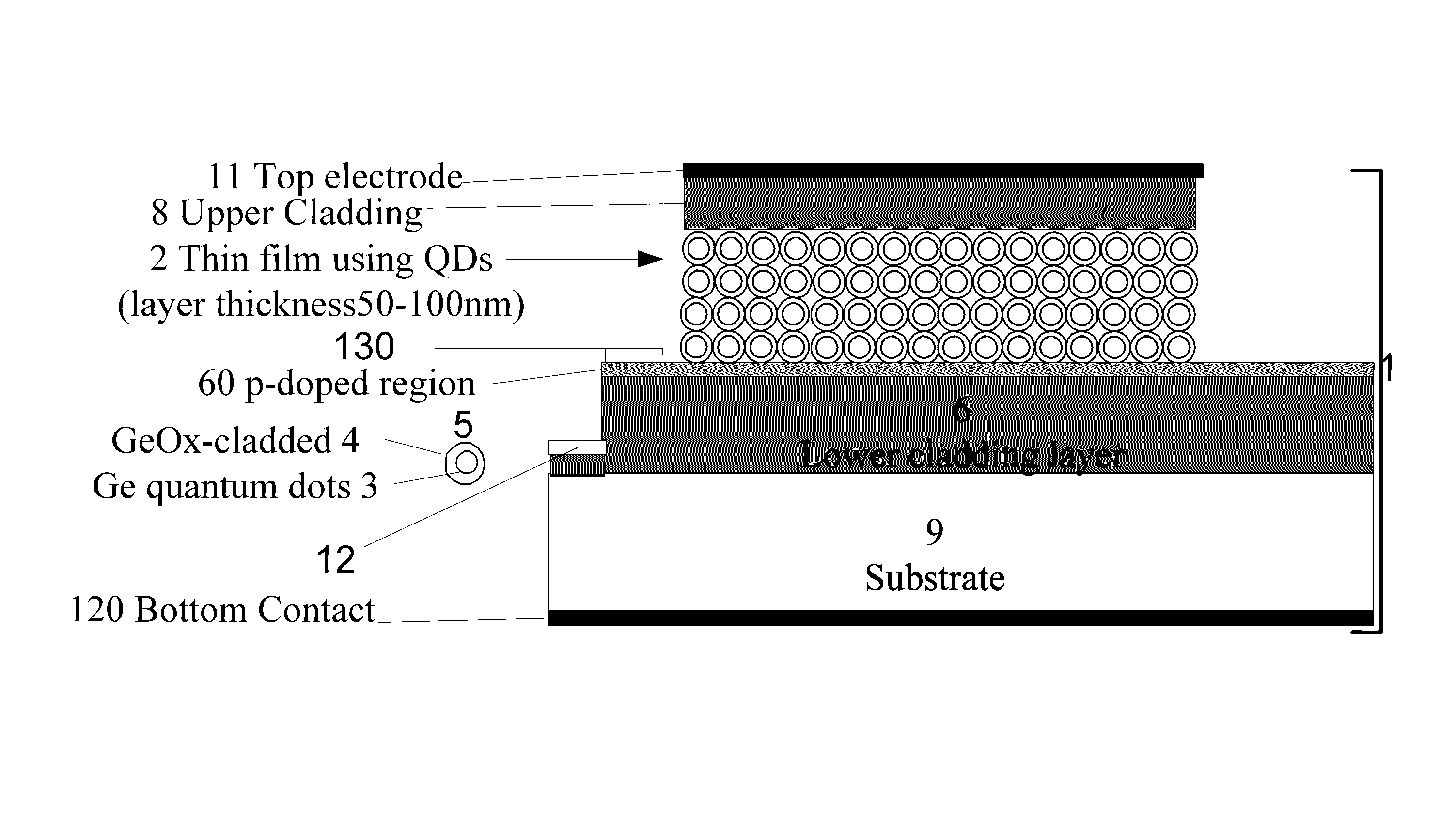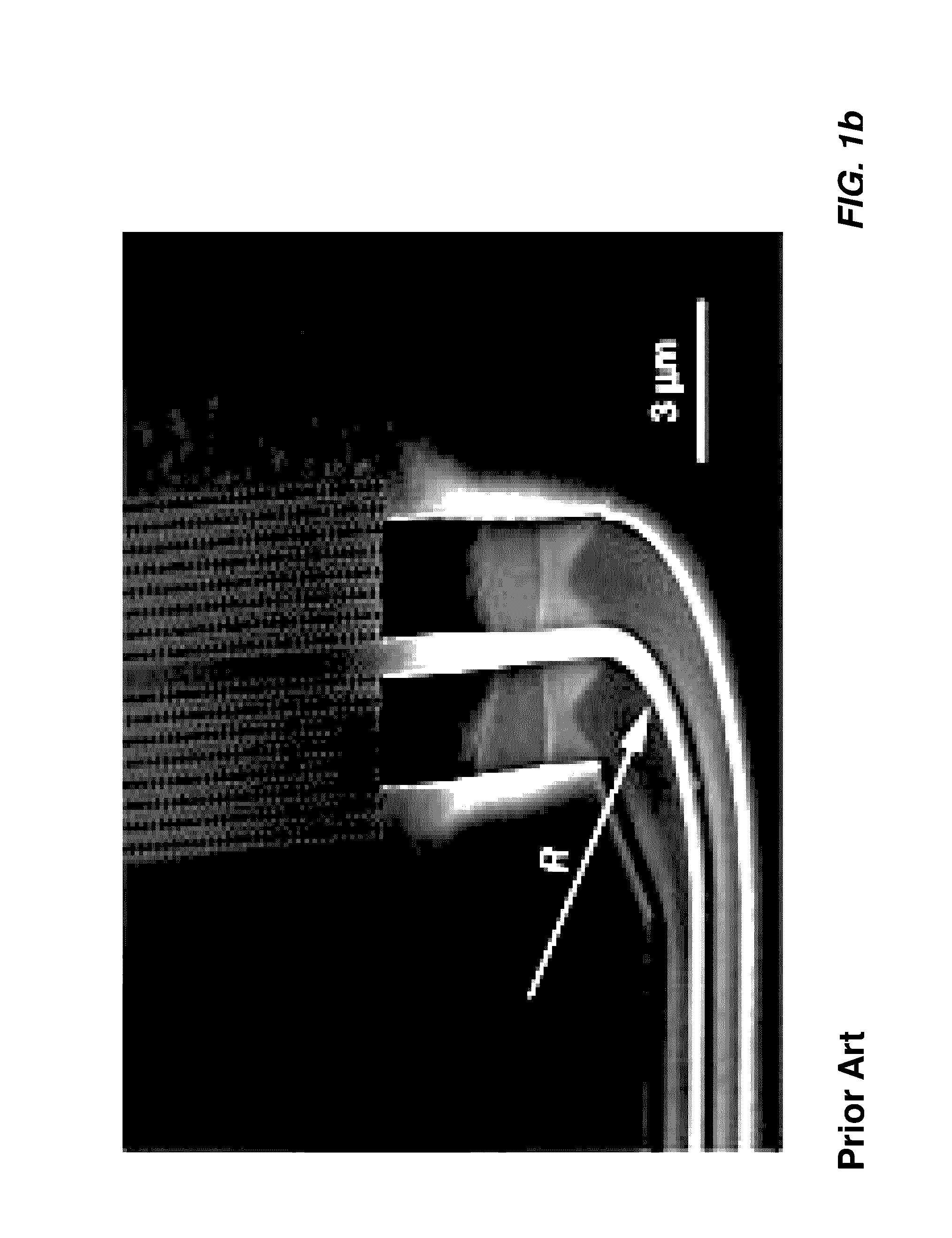Article and method for implementing electronic devices on a substrate using quantum dot layers
a technology of quantum dots and electronic devices, applied in the direction of optical elements, optical waveguide light guides, instruments, etc., can solve the problems of difficult to tune waveguides and other components
- Summary
- Abstract
- Description
- Claims
- Application Information
AI Technical Summary
Benefits of technology
Problems solved by technology
Method used
Image
Examples
Embodiment Construction
[0050]The limitations of the prior art identified above are overcome by employing cladded quantum dot based waveguides and cladding layers which can be tuned after fabrication. This feature also permits reconfiguration of demultiplexers, routers, channel drop filters and other devices needed in the realization of ultra-compact photonic integrated circuits.
[0051]In accordance with the present invention, an article and method is described where the method uses a cladded quantum dot array layer as a waveguide channel sandwiched between two cladding layers which includes index of refraction materials lower than the waveguide layer. This is advantageous because, unlike conventional waveguide layers, the overall effective index of refraction in a quantum dot array layer depends on: (1) dot and cladding material properties, and (2) the core diameter and cladding thickness. The cladded quantum dot layer hosts excitons in the presence of an optical wave signal having an appropriate wavelengt...
PUM
| Property | Measurement | Unit |
|---|---|---|
| thickness | aaaaa | aaaaa |
| diameter | aaaaa | aaaaa |
| diameter | aaaaa | aaaaa |
Abstract
Description
Claims
Application Information
 Login to View More
Login to View More - R&D
- Intellectual Property
- Life Sciences
- Materials
- Tech Scout
- Unparalleled Data Quality
- Higher Quality Content
- 60% Fewer Hallucinations
Browse by: Latest US Patents, China's latest patents, Technical Efficacy Thesaurus, Application Domain, Technology Topic, Popular Technical Reports.
© 2025 PatSnap. All rights reserved.Legal|Privacy policy|Modern Slavery Act Transparency Statement|Sitemap|About US| Contact US: help@patsnap.com



